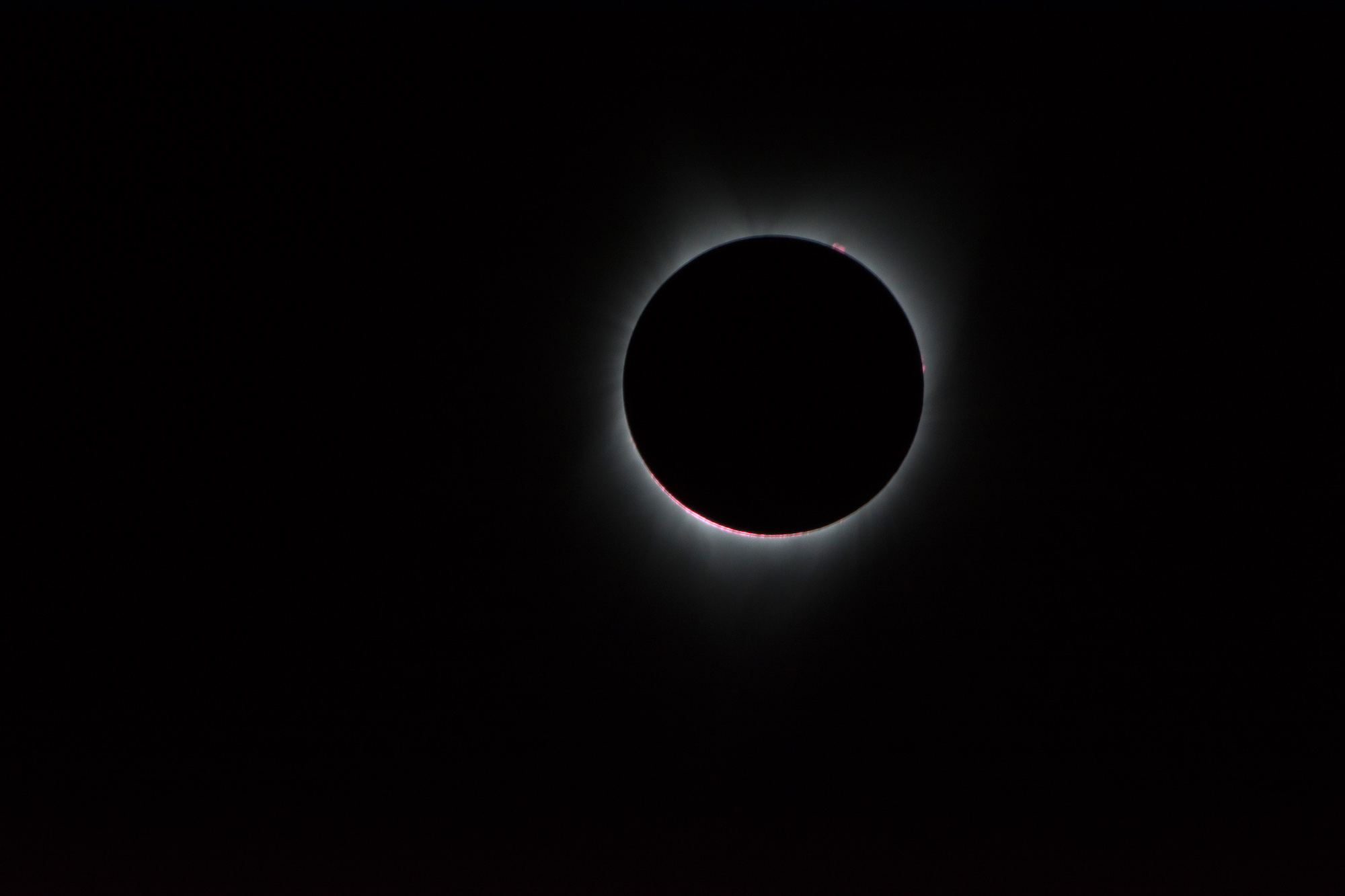
The solar corona is a phenomenon that has captivated astronomers and space enthusiasts for centuries. It refers to the outermost layer of the Sun’s atmosphere, which is visible during a total solar eclipse or with specialized instruments. While the corona may appear as a simple halo of light around the Sun, there are many surprising and intriguing facts hidden within its ethereal beauty. In this article, we will uncover 20 fascinating facts about the solar corona that will leave you in awe of our magnificent universe. From its extreme temperatures to its mysterious magnetic fields, the solar corona is a marvel that continues to perplex scientists and ignite our curiosity about the wonders of space. So, get ready to dive into the realm of the Sun’s dazzling crown and discover the extraordinary secrets of the solar corona.
Key Takeaways:
- The solar corona is a mysterious and dynamic region of the Sun’s atmosphere, reaching temperatures over 1 million degrees Celsius and playing a crucial role in space weather forecasting.
- Studying the corona helps scientists unlock the Sun’s secrets, understand its impact on Earth, and marvel at the beautiful astronomical phenomena it creates.
The solar corona is the outermost layer of the Sun’s atmosphere.
The solar corona is a region of glowing gases that extends millions of kilometers into space.
It is only visible during a total solar eclipse.
During a total solar eclipse, the Moon passes in front of the Sun, blocking its bright surface and allowing the faint corona to become visible.
The temperature of the corona is much higher than that of the Sun’s surface.
While the surface of the Sun is around 5,500 degrees Celsius, the corona can reach temperatures of over 1 million degrees Celsius. The exact reason behind this phenomenon is still not fully understood.
The corona is composed of highly ionized gases.
The corona is made up of ionized gases such as hydrogen and helium, along with other elements in trace amounts.
Solar flares and coronal mass ejections originate from the corona.
These powerful eruptions of energy and matter are often associated with intense magnetic activity in the corona.
The corona is constantly changing in shape and size.
Due to the Sun’s rotation and magnetic activity, the corona exhibits dynamic and unpredictable variations.
The corona extends far beyond the visible disk of the Sun.
The corona extends millions of kilometers into space, forming a tenuous and ever-expanding envelope around the Sun.
The corona emits X-rays.
The high temperatures and ionized gases in the corona produce X-rays, which can be detected by specialized instruments.
The corona contributes to the solar wind.
The corona continuously releases streams of charged particles, known as the solar wind, into space.
Understanding the corona is crucial for space weather forecasting.
The corona plays a vital role in generating solar storms and other space weather events that can impact satellites, communication systems, and power grids on Earth.
The corona can be observed using specialized instruments.
Scientists use instruments like coronagraphs and spectrographs to study the corona and its properties.
Space missions have been launched to study the corona up close.
Missions like NASA’s Solar and Heliospheric Observatory (SOHO) and the Parker Solar Probe are dedicated to studying the corona and unlocking its mysteries.
The corona can have structured patterns of magnetic fields.
These magnetic structures can influence the behavior of the corona and contribute to the formation of solar prominences and other features.
The corona is much less dense than the Sun’s surface.
The corona has a lower density compared to the visible surface of the Sun, which allows it to expand into space.
The corona can appear as a halo around the Sun during certain atmospheric conditions.
When sunlight interacts with ice crystals or water droplets in the Earth’s atmosphere, the corona can create a mesmerizing halo effect.
The corona experiences regular changes in its activity.
Just like the Sun’s surface, the corona goes through cycles of increased and decreased activity, known as the solar cycle.
The corona’s magnetic field is responsible for its unique features.
The complex and dynamic magnetic field of the corona shapes its structures and governs its behavior.
The corona is a source of beautiful astronomical phenomena.
Apart from solar eclipses, the corona gives rise to stunning phenomena like coronal loops, solar flares, and coronal rain.
The corona can affect the orbits of satellites.
The solar wind generated by the corona exerts a gentle but pervasive force on satellites in space, leading to changes in their orbits over time.
The study of the corona is an active area of research in solar physics.
Scientists are continuously exploring the mysteries of the corona to deepen our understanding of the Sun and its impact on our planet.
Conclusion
The solar corona is a fascinating and mysterious part of our universe. With its unique properties and surprising facts, it continues to captivate scientists and astronomers alike. From its extreme temperatures to its role in solar eclipses, the solar corona offers a wealth of knowledge and intrigue. Exploring and understanding this enigmatic celestial phenomenon can lead to advancements in solar research and space exploration.
FAQs
Q: What is the solar corona?
A: The solar corona is the outermost layer of the Sun’s atmosphere, extending millions of kilometers into space.
Q: Why is the solar corona hotter than the Sun’s surface?
A: The reason for the solar corona’s high temperatures is still not fully understood, but possible explanations include magnetic fields and waves in the Sun’s atmosphere.
Q: Can we see the solar corona from Earth?
A: The solar corona is usually invisible to the naked eye, but during a total solar eclipse, it becomes visible as a ring of light surrounding the darkened Sun.
Q: How does the solar corona impact Earth?
A: Eruptions from the solar corona, such as coronal mass ejections, can cause geomagnetic storms on Earth, which can disrupt satellite communications and power grids.
Q: Can astronauts observe the solar corona from space?
A: Yes, astronauts aboard the International Space Station (ISS) have the opportunity to observe and study the solar corona without the interference of Earth’s atmosphere.
Q: Is the solar corona the same as the Sun’s outer layers?
A: No, the solar corona is distinct from the Sun’s inner and outer layers. It is a region of extremely hot and tenuous plasma that forms the Sun’s extended atmosphere.
Q: How thick is the solar corona?
A: The solar corona does not have a clearly defined boundary, but it extends several solar radii away from the Sun’s surface.
Delving into the mysteries of our Sun doesn't stop with its mesmerizing corona. Solar flares, powerful eruptions from the Sun's surface, offer their own set of surprises and wonders. Solar flares are just one aspect of the captivating field of astronomy, which unveils the secrets of the universe. Another fascinating phenomenon is the solar wind, a stream of charged particles emanating from the Sun. Uncover more mind-boggling facts about these cosmic marvels and expand your knowledge of the celestial realm.
Was this page helpful?
Our commitment to delivering trustworthy and engaging content is at the heart of what we do. Each fact on our site is contributed by real users like you, bringing a wealth of diverse insights and information. To ensure the highest standards of accuracy and reliability, our dedicated editors meticulously review each submission. This process guarantees that the facts we share are not only fascinating but also credible. Trust in our commitment to quality and authenticity as you explore and learn with us.


